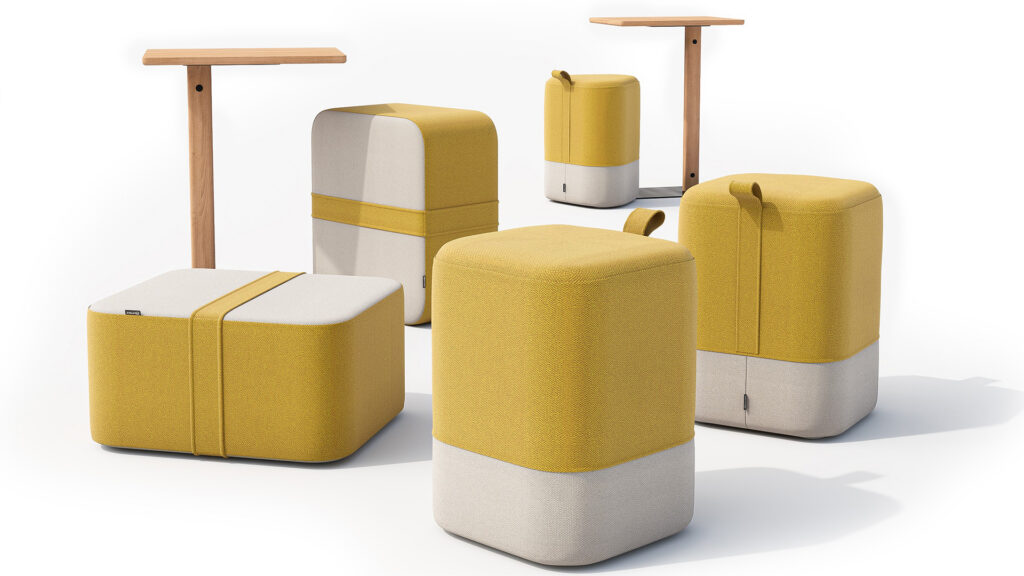Published on 4. Oct 2025

3D visualization is no longer a futuristic concept—it is one of today’s most effective marketing tools. Businesses across industries rely on 3D product rendering to showcase their products, improve customer experience, and drive sales conversions. But why does it work so well, and how can it make a measurable difference in marketing performance?
Why Visuals Work in Marketing
Visuals are central to human perception. Research shows that attention-grabbing and well-designed visual stimuli in advertising not only capture attention but also keep it, significantly increasing recall and customer interest (Banytė, Pilelienė, & Šeinauskienė, 2025). Eye-tracking studies confirm that design complexity, clarity, and meaningful content extend the duration and frequency of gaze fixations—proving that strong visuals sustain engagement rather than just spark it. Research also shows that:
- We process visuals faster than text: Our brains interpret images in milliseconds, making visuals the quickest way to capture attention.
- Emotions drive decisions: Marketing research shows that emotionally engaging visuals increase both recall and purchase intent.
- Clarity reduces hesitation: A detailed product visualization answers questions before they’re asked—what does it look like, how does it feel? This reduces uncertainty and lowers the risk of dissatisfaction.
Why 3D Product Visualization Works Better Than Static Images
A static photo shows only one angle. A 3D render tells the whole story—every detail, every texture, every function. According to Shopify blog posts and internal case studies, merchants who integrate 3D product views often report up to 94% higher conversion rates (Muzzi, 2024). Other internal case studies, such as 3D eCommerce for Furniture by Zolak, confirm similar results (Talochka, 2025).
Over the years, working alongside producers and subject matter experts, I have seen how static images often fail to communicate the full story. Every texture, angle, and feature matters, and 3D product visualization allows us to show it all. This experience has taught me why customers respond so strongly when they can explore a product virtually before purchase.
While exact results can vary by industry, product type, and implementation, the trend is clear: well-executed 3D visualization significantly increases customer engagement and drives higher conversion rates.
Real-World Impact of 3D Visualization
Through more than a decade of creating 3D visualizations for industries ranging from furniture and consumer electronics to architecture and interior design, I have witnessed firsthand how these tools transform marketing outcomes. E-commerce brands see higher engagement and fewer product returns and manufacturers save costs by showcasing products before production even begins.
Some concrete examples of impact include:
- E-commerce brands: Higher engagement, reduced product returns, and increased purchase confidence.
- Interior design & architecture firms: Faster client approvals and stronger project buy-in through immersive visual presentations.
- Manufacturers: Cost reduction by validating designs and testing marketing concepts before creating prototypes.
- Furniture & garden structures: Clients can “walk through” products virtually, enhancing satisfaction and emotional connection.
Case Example 1: Softrend & Furgner – Furniture Visualization
Softrend Online OÜ, a well-known furniture producer, needed to present hundreds of product variations—different sizes, shapes, materials, and colors. Creating and photographing each option physically would have been both costly and time-consuming. Through 3D visualization, we produced studio-style images that allowed their customers to see all combinations clearly and make confident choices before purchase.

Similarly, Furgner OÜ, another modern furniture brand, focused on creating emotional impact. For them, we designed lifestyle images, placing furniture in inspiring interior environments for social media and website use. The goal was not only to show the product but also to convey a feeling and atmosphere that resonates with customers and drives engagement.

Case Example 2: Lasita – Garden Houses
Lasita Maja OÜ, one of Europe’s leading garden house producers, offers hundreds of different models and variations. For them, visuals are the key to sales, because a strong image makes customers dream and take that very first, important step toward purchase.
Beyond standard 3D product images with clean backgrounds, we often create interior views, cross-sections, and lifestyle renders of garden houses. These not only show the product’s practical features but also help customers imagine themselves using the space—whether as a summer house, home office, or sauna.

Expert Q&A: How Nordic Render Addresses Key Challenges in 3D Visualization
We at Nordic Render have received many questions from clients and partners. Through our extensive experience, we understand the challenges businesses face in visual marketing.
How does Nordic Render ensure quality and emotional impact?
Our team combines technical precision with storytelling, ensuring every render is accurate, visually engaging, and emotionally compelling. With years of experience and a loyal base of returning clients, we have earned their trust in delivering high-quality visuals.
What makes 3D visualization more effective than traditional product photography?
3D visualization allows customers to explore every angle, texture, and feature of a product before it exists physically. This creates stronger emotional engagement and increases conversion rates compared to static images.
Can 3D visualization really reduce costs for manufacturers?
Absolutely. By showcasing products virtually before prototypes are created, manufacturers can validate designs, test marketing concepts, and avoid costly revisions, saving both time and money.
Takeaway
3D product visualization is more than a trend. It is a strategic tool that drives sales, enhances customer experience, and reduces costs. Case studies like Softrend, Furgner, and Lasita show the measurable impact of investing in high-quality 3D imagery—allowing businesses to tell their full product story, connect emotionally with customers, and create confident purchase decisions.
Sources
Banytė, J., Pūkienė, I., & Dargytė, G. (2025). The role of consumers’ visual attention stimuli in advertising: Traditional and neuromarketing research perspectives. Innovative Marketing, 21(1), 296–313. https://doi.org/10.21511/im.21(1).2025.24
Muzzi, C. (2024, January 24). The thrilling evolution: 3D ecommerce and a new era of retail. Shopify. https://www.shopify.com/blog/3d-ecommerce
Talochka, A. (2025, July 11). 3D eCommerce for furniture | 94% increase in conversion rate. Zolak. https://zolak.tech/blog/3d-commerce
